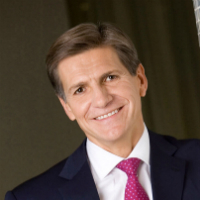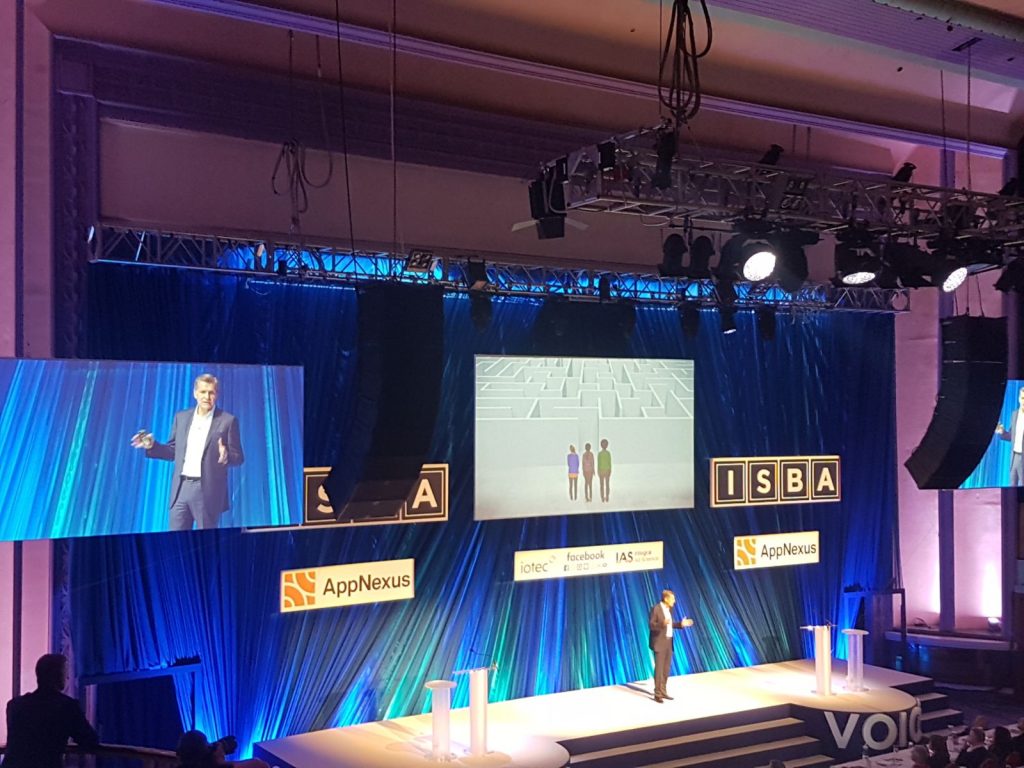 P&G’s chief brand officer Marc Pritchard, speaking at ISBA’s annual conference in London, today called for the reuniting of creative and media agencies, saying that he any many others “rue the day” that the two were split. Pritchard said that he is pleased with progress that had been made in the industry since his landmark talk at the IAB Annual Leadership conference last year, but that now P&G is seeking “mass disruption”, part of which involves reinventing agency relationships.
P&G’s chief brand officer Marc Pritchard, speaking at ISBA’s annual conference in London, today called for the reuniting of creative and media agencies, saying that he any many others “rue the day” that the two were split. Pritchard said that he is pleased with progress that had been made in the industry since his landmark talk at the IAB Annual Leadership conference last year, but that now P&G is seeking “mass disruption”, part of which involves reinventing agency relationships.
“If 2017 was the year of the wake up call, 2018 is the year we take back control,” said Pritchard, outlining three areas in which his company is pursuing change: media, advertising, and agency partnerships, and it was agency partnerships that he said was the most exciting part of his industry shake up.
Pritchard has spoken a frequently over the past few years about a change in agency partnerships as it has cut the number of agencies it works with, and sought a new model which open sources creative and pools production. Here though, Pritchard decried a bloated agency model in which creative and media agencies are separated, and creatives make up a relatively small part of the agency workforce.
“Over time our marketers have steadily outsourced more and more to agencies, which has resulted in too many touch points between brand managers and consumers, and a lot of project management versus brand management,” said Pritchard.
Part of Pritchard’s solution is for P&G to “get it’s hands on the keyboard” and bring more media planning in-house, which it is already doing in part by executing more private marketplace deals within its own walls.
He also wants to see change in the creative agency model. “We will invest in creative talent, but right now creative talents represent less than half of agency resources because they’re surrounded by excess management.” Pritchard said marketers, including P&G, have compounded the problem by encouraging a “buddy system” with agencies, where everyone from the advertiser’s side is expected to be paired with someone from the agency’s client services team. This leads to “way too much time spent on conference calls and meetings, on flights travelling to see each other, and wasting time with PowerPoint presentations”.
“It is time to disrupt this archaic Mad Men model,” said Pritchard.
Another part of his solution is the reuniting of creative and media agencies. “Many of us the the day the media agencies split from creative agencies,” said Pritchard. “There were good reasons at the time, for media buying efficiencies and operational efficiencies, but as the media world got more fragmented and complex, this just added extra touches, complexity and cost. Now with data analytics, we can bring media and creative back together.” He gave an example from Pampers, which reunited the Saatchi creative team with Publicis Media, who co-located in London for the ‘Bliss’ campaign.
While changes to the agency partnership model are perhaps the most ambitious of Pritchard’s plans, he also spoke of his desire to change the way P&G carries out its media planning, and its ad campaigns themselves. In media buying, he wants to move further away from a “spray and pray” approach to more precise, one-to-one targeting. He said how greater transparency into campaign metrics over the past year has highlighted areas of wasted spend, and the his company is cutting back on excess frequency in how many times ads are shown to some customers.
For campaigns themselves, Pritchard said there has been little innovation over the last few decades, save from shortening TV ad times. He said that P&G is experimenting to find more effective campaign formats, giving an example from Olay, which switched from putting out frequently changing creative to running the same campaign over an extended period. Pritchard said this tactic has seen all ad quality metrics for Olay’s campaign had increase.
While there’s lots he want to change though, Pritchard was complimentary towards progress that was made over 2017 towards cleaning up the digital advertising ecosystem, and said it was well on its way to completing the steps he laid out last year.





